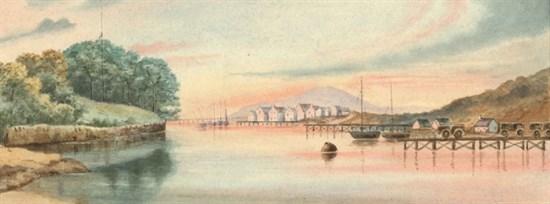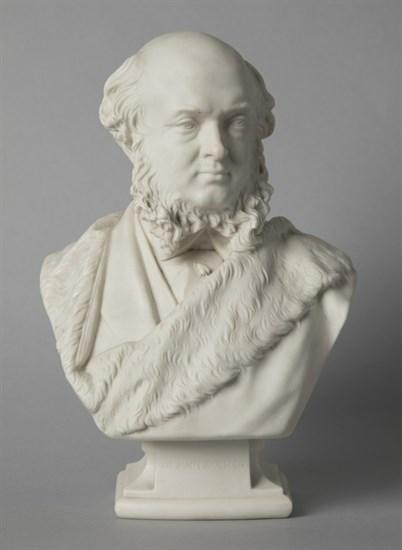Victorian Barrow
Early Days
The shelter of Walney island offered a safe harbour at Barrow and from about the 1740s a small port developed to carry away Furness iron ore to smelting works in Wales and the Midlands. Four jetties were built out into the Channel to ease the loading of ore boats, the first in 1790, the last in 1842. There was one bottleneck to overcome before the full potential of the mines around Dalton and Lindal could be achieved. Iron ore was carted to the port of Barrow and whilst there could be up to 400 carts in action at any given time, the loads they carried were small and the primitive roads were often impassible in winter. In the era of railway mania the solution was obvious.


From Farm to Furnace
The Furness Railway passenger and freight line opened in 1846 with a 24 year old James Ramsden as Locomotive Superintendent. However, the Furness Railway was a small venture, self-contained within Furness. A permanent link with the outside world came only in 1857 when the Brogdens built the Kent and Leven viaducts. A few years later the Furness Railway took over this Ulverston to Lancaster line, a crucial development in the growth of Barrow.
Critical to the Barrow's success were a few factors: the discovery of large sops of iron ore which led to the creation of the Iron and Steelworks, Furness Railway’s development plans and a fever of speculation that pushed on and on the town’s growth.
By 1871, the population of Barrow had exploded to 18,911; an enormous increase. Barrow's rapid expansion from small farming village to Victorian boom-town produced feelings of surprise and even awe from some onlookers.
"One of the miracles of our time; I look upon it with that same sort of wonder with which some people regard the pyramids.” (Bishop of Carlisle, 1871)
Building a Town
A shortage of housing and poor quality housing in Barrow were problems in the Victorian period (and also during the First World War when there was a massive increase of temporary labour). Infrastructure had to be built for the population: transport, schools, churches, houses and amenities.
The Victorian period was when Barrow came of age. No longer was it a small farming village under the control of Dalton parish, but free to form its own municipality. The first Town Council was nominated in 1867 by the Duke of Devonshire (elections began the following year), and the first Mayor was James Ramsden, who twenty years earlier had supervised the first hesitant steps of the Furness Railway.
In 1877 it had been agreed to build a grand Town Hall on a site just to the east of the temporary council offices in Cornwallis Street and Lawson Street. Following a design competition and lengthy amendments, building began in 1882. Five years later, to mark Queen Victoria’s golden jubilee, a magnificent gothic Town Hall was formally opened, dominating the town centre with its clock tower of warm, Hawcoat sandstone. By the mid 1880s the Council controlled the town’s highways, police, fire, gas and water, library and an isolation hospital.
The final quarter of the nineteenth century was a curious time in Barrow, a period of hesitancy and anticlimax. Technical improvements in steelmaking meant that phosphoric iron ore could now be used in the Bessmer process, opening up Furness mines and the Barrow Haematite Steel Company to the chill blast of competition. At the same time, Furness ore reserves were depleting and as the mines went deeper they were more and more prone to flooding.
In the late nineteenth century it looked like Barrow's growth might be at an end. However, despite a shaky start, the shipyard became the next star player.
If you want to find out more about this fascinating period then come to the Dock Museum for a visit or even a guided tour (booking essential for tours).

